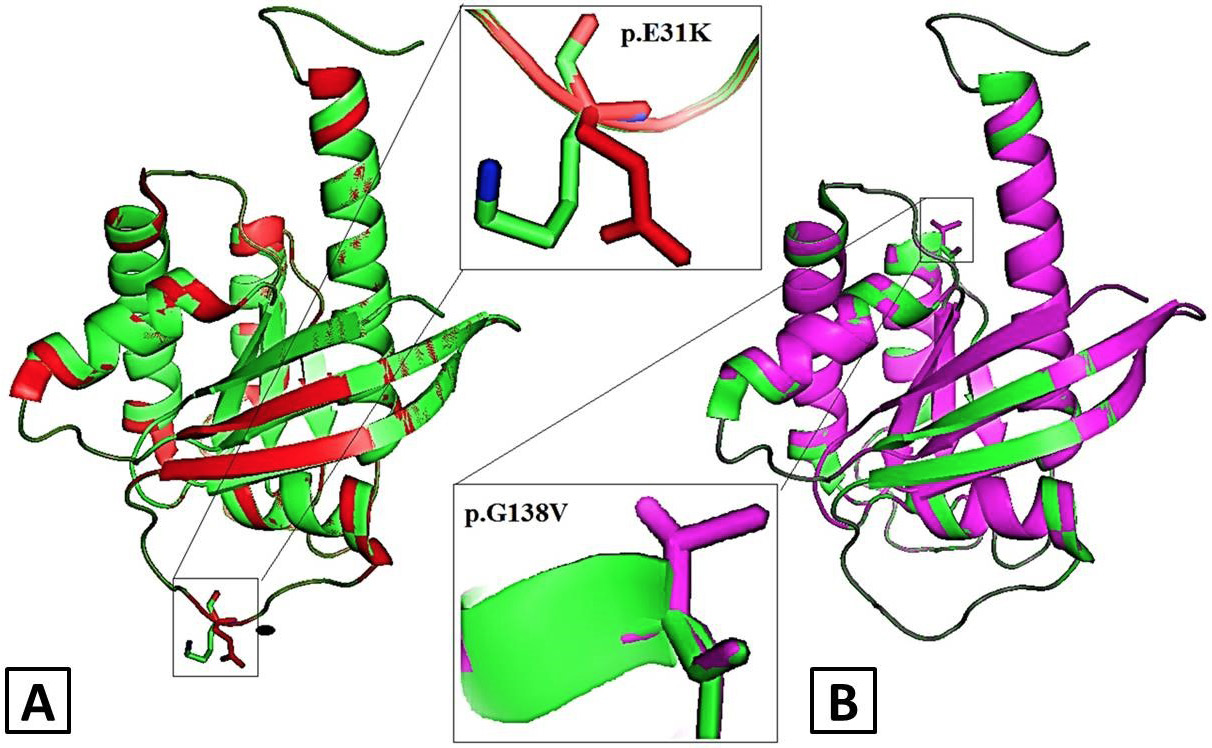Conformational Changes in Wild Type KRAS Induced by Two Novel Variants p.E31K and p.G138V
Conformational Changes in Wild Type KRAS Induced by Two Novel Variants p.E31K and p.G138V
Bibi Nazia Murtaza1,2, Azhar Qayum3, Shamaila Inayat Nadeem1, Naif Awdh Al-Maliki4, Abdulaziz Alamri4 and Abdul Rauf Shakoori2,5,*
Isoforms of Ras (adopted from Schubbert et al., 2007).
Docking analysis report: A, Wild-type KRAS-GTP complex; B, E31K-KRAS-GTP complex; C, G138V-KRAS-GTP complex. Colour coded as KRAS protein (paleblue cartoon), GTP (palegreen sticks), Magnesium ions (yellow spheres) and E31K and G138V mutations (red sticks).
Structural alignment of wild-type and mutant models of KRAS in cartoon mode visualized by PyMol (A) p.E31K KRAS mutant model (red) superimposed with native KRAS protein (green) (B) p.G138V KRAS mutant model (magenta) superimposed with native KRAS protein (green) KRAS. Rectangle boxes depict the zoomed-in view of mutation sites.













